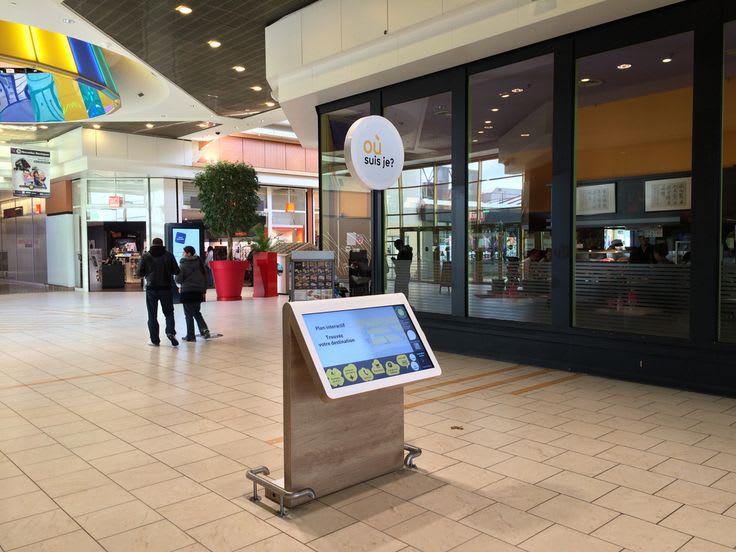Guest
on 9 November 2018
The rise of the Digital Smart Kiosk

This is a guest blog by Jody Smith, Product Manager at Broadsign.
The world’s increasing demand for quick, personalised service often clashes with budgetary concerns and the limited throughput that individual workers are capable of. Fortunately, there’s a solution: touch-enabled, digital smart kiosks.
Today’s smart kiosks are a far cry from the slow, unresponsive touchscreen stands of old. Fast, adaptable, and offering the most intuitive interactive experience for the average person, smart kiosks make it easy to provide stellar information and service with a relatively small investment. It should come as no surprise that they are being rolled out in many contexts around the world.
Smart kiosks get people on their way
For every person with an innate sense of direction, there’s another with a knack for getting turned around. As anybody who has ever gotten poor directions to a job interview, a hospital ward, or a retail location can attest, being lost can get pretty stressful, pretty quickly.
Interactive kiosks are proving an ideal tool for saving the directionally challenged in all kinds of environments. On the street, cities like New York have deployed smart kiosks that include interactive wayfinding capabilities. Users can step up, enter their destination, and receive directions to help them get to where they’re going. The same concept has been deployed in malls, hospitals, airports, and other environments where convenient, personalized directions can come in handy.
Crucially, this format for delivering directions doesn’t require that users read a traditional map. Instead of a “you are here” icon and a map with a fixed orientation, interactive kiosks with good wayfinding capabilities can put directions in front of a user with their perspective as the starting point.
Smart kiosks deliver info on demand
Information kiosks are common fixtures in museums, national parks, and other types of environments where on-demand context can enhance the guest experience. These kinds of environments, however, tend not to require much flexibility or personalization, so they don’t push the concept to its limits. Today’s interactive kiosks are able to meet much tougher demands.
Healthcare offers a great example. In hospitals and clinics, there is often a problem of too many people wanting information and too few people able to deliver it. With interactive kiosks, it’s possible to correct this bandwidth issue in a relatively straightforward manner. Enable interested individuals to seek out their own answers, and you can meet a need without drawing too much on staff.
Offering information kiosks inside and outside of examination rooms can allow patients to check in on everything from waiting times to detailed information relating to common ailments or treatment options. Executed correctly, this type of system can help patients remain calmer, and perhaps even become better informed in advance of their appointment.
One of the main concerns with this type of system is ensuring that hackers don’t steal information and that they don’t add incorrect or inappropriate information into the system. This is particularly true when sensitive information like patient records or treatment plans might be accessible. Building a kiosk atop an operating system like Ubuntu, which uses strict access management to effectively lock out potential intruders, is an important way to ensure only intended individuals interact with a kiosk.
Smart kiosks pay for themselves
The adaptability of smart kiosks makes them a compelling option for all sorts of projects. Essentially, if you have information to deliver visually in a public or semi-public setting, a smart kiosk can probably work. The benefits of smart kiosks extend well beyond this, though, for the reason that they can basically pay for themselves.
Digital smart kiosk screens are, essentially, digital signage screens in miniature, and advertisers are eager to get their content up on those screens where users can see them. After all, it’s rare for more than one or two kiosks to be in a given area, meaning busy locations can expect their kiosks to get a fair bit of traffic.
Further, it’s straightforward to get advertising on smart kiosks that is tailored to the likely audience. With a digital signage platform like Broadsign, both direct and programmatic ad sales are possible, potentially opening up ad inventory to a global marketplace. The result is advertising that not only pays the bills, but that helps to create a media-rich experience that actually adds value to the customer experience.
Mir-kiosk enables a graphical output for IoT devices such as digital smart kiosks. For more information, read the blog or install the snap now.



